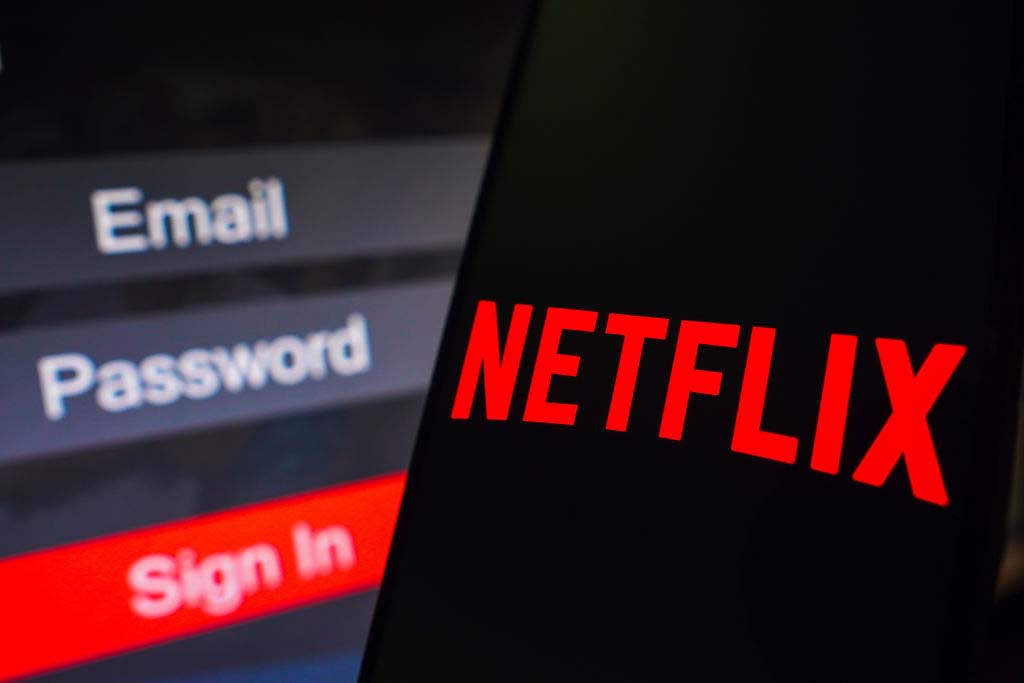Media Math and Myth: Password, Please (Schley)
In clamping down on credential-sharing, Netflix may lose millions of customers. And gain even more

In late May, a warning bell sounded for Netflix: The research firm OnePoll, having surveyed 1,000 U.S. adults on behalf of Forbes, was picking up signals suggesting that as much as 35% of the Netflix subscriber base might cancel subscriptions in protest of price hikes and/or the streamer’s new clampdown on password-sharing.

Here’s the backdrop: On May 23, Netflix notified customers of a new “Extra Members” policy: Account holders sharing logins for Netflix’s Standard Plan with someone outside the immediate household would need to tack on a $7.99-per-month surcharge to continue sharing. Alternatively, the user drafting on someone else’s credentials can transfer their profile to a new paid account of their choosing. Alternatively again, the subscribing member could stop allowing someone else to use their login credentials altogether.
A separate survey from Samba TV and HarrisX came to a similar conclusion around consumer sentiment: 37% of Netflix subscribers would consider canceling in the wake of the new password policy. In both cases, the results seemed chilling: Forbes noted that the findings, if extrapolated to Netflix’s entire global user base, “could result in approximately 80 million lost subscribers.”
But then, only days later, better news. The researcher Antenna, which examines payment data, found that Netflix was adding new accounts in droves. Antenna calculated that Netflix had its best four-day runup of subscriber additions in nearly five years, with more than 100,000 accounts inaugurated on May 26 and again on May 27. Tightening the screws on password-sharing suddenly looked to be a brilliant business maneuver.
The obvious question, then, is: Who got it right? And who got it wrong?
The answer to the first question is: probably both. The answer to the second is: probably neither.
The truth is that both findings can be true: Netflix can lose lots of subscriptions because of its hardened password-enforcement approach (although 80 million seems clearly to be an exaggeration). At the same time, Netflix can also add lots of subscriptions because of the very same policy.
The smarter way to stay on top of the multichannel video marketplace. Sign up below.
First the bearish case: It’s certain that some number of accounts will peel away as users bristle at the clampdown on password-sharing. This may be the sentiment researchers from OnePoll and Samba/HarrisX picked up: a generalized recoiling from the realization that parents, for example, can no longer freely share credentials with their kids who are away at college. If Sarah the sophomore can no longer log in with mom and dad’s account, goes the thinking, then we’ll cancel altogether.
Or at least, that’s what people may be telling survey takers. As always, survey data can reflect stated intentions that don’t always materialize. Fans of the Netflix courtroom drama The Lincoln Lawyer, for example, may reconsider their cancellation vow when new episodes of the original series hit the Netflix menu next month.
Antenna’s reliance on “millions of consumer transactions” shared by opt-in contributors offers a different viewpoint, suggesting many Netflix stowaways are going legit. One longtime Netflix user recently confessed to the online magazine The Ringer that “a decade of Netflix mooching” may be ending.
What matters in the end is what everyone who has ever managed a subscription business must contend with: the delta between gross subscriber additions and gross subscriber defections. If the total number of new accounts tied to the password-sharing clampdown — “gross adds” in industry-speak — is greater than the total number of disconnects tied to the new policy, Netflix might win big with a surge in paying customers.
The word “might” applies here because it’s not just pickups and defections resulting from the new password policy that matter. There is also underlying, normally occurring activity. In any time period, Netflix, like every subscription service provider, loses some accounts and gains others. What’s changed is that now, this normal churn within the customer base is amplified by accelerated activity tied to the password clampdown.
Where does Netflix come out? We’ll know by mid-July, when Netflix releases second-quarter financial results. Regardless of the net tallies, the outcome will hinge on these ingredients:
The stowaway universe. We don’t know exactly how many password-sharers are out there, but a fair body of research suggests three or more of every 10 U.S. Netflix account holders share their passwords with somebody outside of the immediate household. (Leichtman Research Group has reported the U.S. number for Netflix at 33%; Netflix itself reported in 2022 that 100 million subscribers, or nearly half the global total, shared passwords.) In North America, Netflix counted 74.4 million paid memberships — tantamount to household or individual subscriptions — as of March 31. A reasonable estimate, drawing from the sources above, is that there may be around 26 million Netflix password-sharing accounts in the U.S. and Canada. (Or roughly 35% of the North American total.)
Membership conversions. There are three swing votes here. First, what percentage of rogue users now relying on shared credentials will convert to their own paid accounts? Second, what percentage of members will agree to a $7.99 surcharge to keep their friends/family members aboard? (Note that in this case, it’s possible there may be little impact on Netflix’s net subscriber total, but a bump in monthly spending per account, as existing members will now pay more.) Third, what percentage of members will either disconnect altogether as a form of protest, as the research firms OnePoll and Samba warned, or will simply stop allowing others to log in? Regarding the first option — converting shared password users to paying accounts — it’s likely the range of conversions will be high by direct-marketing standards. Netflix has a keen advantage in that these users don’t have to be “sold” on the product. They’re already familiar at a level of intimacy, many of them maintaining unique identities, viewing histories and personalized content recommendations. Further, the cause is aided by the fact that Netflix now offers an advertising-supported iteration for just $6.99 per month. As a result, the economic barrier to entry is lower than ever. It’s a good time to be vanquishing rogue passwords.
Normal churn. Netflix has been carefully guarding its churn metric out of competitive concerns. One of the more trustworthy estimates comes from category analyst Doug Shapiro, who cites Antenna data putting Netflix’s monthly churn rate in 2022 at around 3.3%. If we round down for simplicity to 3%, it suggests the service sheds about 2 million North American accounts every month and must replace them with newcomers in order to grow.
Password-induced churn. It’s naive to think Netflix won’t lose some of its North American base because of the new password-sharing clampdown — maybe even a big chunk. If we believe that 35% of subscribers share passwords, and that around 10% of those account holders will cancel altogether (a bleak scenario, but one that’s possible), we can project that Netflix could lose as many as 3 million U.S. and Canada accounts during the current transformation period because of the pushback against the new password policy.
The growth challenge. In sum, it’s possible Netflix could lose as many as 5 million total North American subscribers in short order as the new policies take hold, 2 million from normal monthly churn and another 3 million or so because of password-related defections. In order to show net subscriber growth over this same period, Netflix needs to add at least one more subscriber than it loses.
Net additions. Can Netflix do it? Almost assuredly. In the pool of 26 million or so users currently drafting on a friend or family member’s credentials, Netflix possesses an enormous and enviable pool of gross-addition prospects who have a greater-than-usual propensity to sign up for their own accounts. If we apply a conversion rate of 25% to the pool of (26 million) password-sharers, then Netflix might rack up 6.5 million gross adds from a one-time phenomenon. Against our calculated loss of around 5 million, that sum indicates a bounty of more than 1 million net new memberships. If Netflix can hold down the number of cancellations to the sub-5 million level over roughly a one-month burst, the results could be even more striking. Also, not to be overlooked are the password-sharing households that agree to foot the bill for their hangers-on. How Netflix accounts for this new classification of customers will have impact on the reported subscriber totals.
How the early returns play out won’t be known to investors and the general public until a few weeks from now. Internally, of course, managers at Netflix already can see where the trends are headed on a minute-by-minute basis. When the final tallies are known to the rest of us, they will serve as a reminder of the vagaries and uncertainty of third-party surveillance data. Forbes warned of major defections. Antenna saw little but upside. In the end, both may be right.
Media, Math and Myth blogger Stewart Schley writes about media, telecommunications and the business of sports from Denver. He is currently writing a book about the transformation of the U.S. cable television industry.
